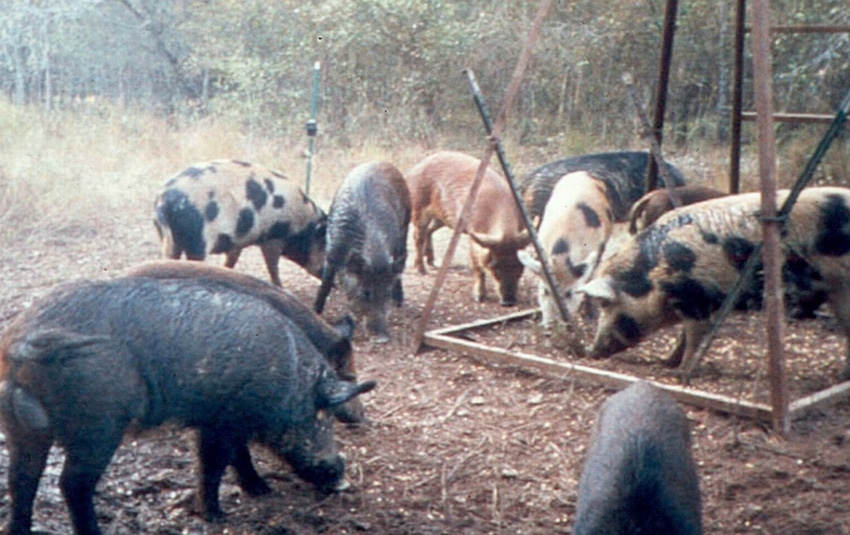Feral swine are spreading across the United States, and leaving a path of destruction and maybe worse in their wake.
March 21, 2017

Feral swine are spreading across the United States, and leaving a path of destruction and maybe worse in their wake.
In 2015, Louisiana State University Ag Center released a study that feral swine did damage to Bayou State crops in 2013 to the tune of at least $30 million. That is just one state. According to the USDA, there are about 6 million feral hogs living in at least 41 states. California, Florida, Oklahoma and Texas have some of the largest populations.
In addition to crop damage, feral hogs also bring with them diseases that can be spread to wildlife and livestock, which scares hog producers who are already weary of gaps that may exist in biosecurity measures to keep their own herds healthy and safe.
Hunting and trapping of feral swine have been seen as the most-effective control method, while other alternatives, such as baiting have been studied.
In late-February, Texas Agriculture Commissioner Sid Miller announced a rule change to allow the use of a warfarin-based hog lure to be used to help control the feral hog population in his state, a population that is estimated to be over 2 million. Feral hogs are found in 230 of the state’s 254 counties and are causing about $52 million in damages to ag enterprises annually. Miller’s announcement of the rule change classified the warfarin-based hog lure as a state-limited-use pesticide.
“This solution is long overdue. Wild hogs have caused extensive damage to Texas lands and loss of income for many, many years,” Miller says. “With the introduction of this first hog lure, the ‘Hog Apocalypse’ may finally be on the horizon.”
Miller’s plan has encountered resistance, as according to Houston Public Media opponents have filed a lawsuit putting Miller’s rules for the poison on hold. The EPA has approved the use of the poison but the company that makes the poison says it won’t sell it in Texas until the state rules for using it are in place.
Now the Texas State Legislature is getting in on the act, as bills are going through both the House and Senate to study the warfarin product more thoroughly prior to its use to control the Texas feral hog herd. The Texas Veterinary Medical Association voted to support both measures.
The TVMA says in a press release, “Given the potentially serious consequences and potential collateral effects on humans, livestock, dogs and other pets, and wildlife, and given the issues of humaneness involved in killing feral hogs or non-target species by use of warfarin poisoning, TVMA recommends that the proposed warfarin product be subjected to scientific study, including field studies in the real-world Texas setting of our open ranchlands, most of which do not have hog-proof fencing.”
The Senate bill has been referred to the committee of Agriculture, Water and Rural Affairs, while the House version has been referred to the Public Health Committee.
The USDA says, feral swine have been known to carry or transmit more than 30 diseases and 37 parasites that can be transmitted to livestock, people, pets and wildlife.
Feral swine can carry several diseases that affect domestic swine. If a foreign animal disease, such as classical swine fever or foot-and-mouth disease, were to enter the United States, feral swine could spread the disease to domestic swine or other susceptible animals. Once prevalent in feral swine populations, the disease would be extremely difficult to eradicate. Another concern is the potential for feral swine to reintroduce diseases that have been eradicated in U.S. livestock. For example, domestic swine are now free of pseudorabies and swine brucellosis. If reinfection through feral swine should occur, it would be economically devastating to the pork industry.
You May Also Like



